Balts
Balts, peoples living on the south-eastern coast of the Baltic Sea (map 1.), speakers of Balt languages; of Indo-European stock. The name is artificial, created in 1845 by G.H. Nesselmann from the Latin name Mare Balticum. The original homeland of the B. was in the forest zone of Europe (on the Upper Daugava, Dnieper and Oka rivers) from which area around 7th-5th centuries BC successive waves migrated to the Baltic Sea where they gradually assimilated the local Old Indo-European population (presumably with a Finnic substrate). B. occupied a territory from the Lower Vistula eastward to the Lower and Middle Daugava basin. Today B. languages are spoken only by Lithuanians and Latvians, other B. tribes, Old Prussians included (Galindians, Sudovians/Yotvingians, Sambians, Natangians, Nadruvians, Pomesanians, Pogesanians, Warmians, Bartians, Skalvians), became extinct or assimilated (after the 13th c.).
Thanks to rich amber deposits (in Sambian Peninsula/today in Kaliningrad Oblast; also on the western coast of Lithuania) the B. came into contact with the Roman Empire (Amber Road), engaged in long-distance trade and were given a place in the written sources starting from the first centuries AD (Pliny the Elder, Tacitus, Cassiodorus, Jordanes). Evidence on particularly lively contacts with western, southern Europe and Scandinavia during 5th-7th centuries is recorded on the former B. territory now within the borders of Poland (Masuria, Elbląg Heights) →Olsztyn Group , →Elbląg Group .
AB-W
Literature: J. Okulicz, Pradzieje ziem pruskich od późnego paleolitu do VII w. n.e., Wrocław 1973; J. Okulicz, Einige Aspekte der Ethnogenese der Balten und der Slawen im Lichte archäologischer und sprachwissenschaftlicher Forschungen, Quaestiones Medii Aevi 3, Warszawa 1986, p. 7-35; J. Kolendo, Tacyt o bursztynie w kraju Estrów. Rzeczywistość i ideologia, [in:] A. Bitner-Wróblewska, G. Iwanowska (eds.), Bałtowie i ich sąsiedzi. Marian Kaczyński in memoriam, Seminarium Bałtyjskie II, Warszawa 2009, p. 127-137; A. Bitner-Wróblewska, North-eastern Poland in first centuries AD – a world apart, [in:] U. Lund Hansen, A. Bitner-Wróblewska (eds.), Worlds Apart? Contacts across the Baltic See in the Iron Age. Network Denmark-Poland, 2005-2008, Nordiske Fortidsminder C, 7, København-Warszawa 2010, p. 141-184.
-
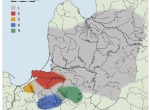
 full resolution
full resolution
Map 1. The Balt territory during the Late Migration Period. 1 – maximum extent, 2 – Dollkeim-Kovrovo Culture, 3 – Elbląg Group, 4 – Olsztyn Group, 5 – Sudovian Culture (Bitner-Wróblewska 2010, fig. 6).
-
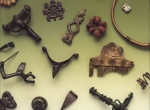
 full resolution
full resolution
Fig. 1. West Balt finds from Masuria, 2nd-6th cc AD. (Nowakowski, Die Funde der römischen Kaiserzeit und der Völkerwanderungszeit in Masuren, MVF, SM zu Berlin. Bestandskatalog 6, Berlin 1998, book cover).
-
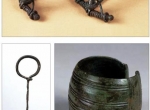
 full resolution
full resolution
Fig. 2. Finds from the cemetery at Netta, Augustów distr.: 1-3 – grave 31; 2 – grave 142 (Bitner-Wróblewska, Netta. A Balt Cemetery in Northeastern Poland, Monumenta Archaeologica Barbarica XII, Warszawa 2007, Plate CXXVI).
-
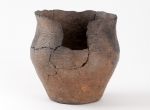
 full resolution
full resolution
Fig. 3. Window urn from the cremation cemetery at Tumiany (Warmińsko-Mazurskie Voivodeship; phot. G. Kumorowicz)
-
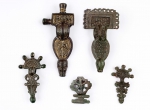
 full resolution
full resolution
Fig. 4. Selected brooches from the cremation cemetery at Tumiany (Warmińsko-Mazurskie Voivodeship; phot. G. Kumorowicz)
-
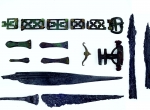
 full resolution
full resolution
Fig. 5. Finds from the cremation cemetery at Swobodna (Warmińsko-Mazurskie Voivodeship; phot. G. Kumorowicz)


